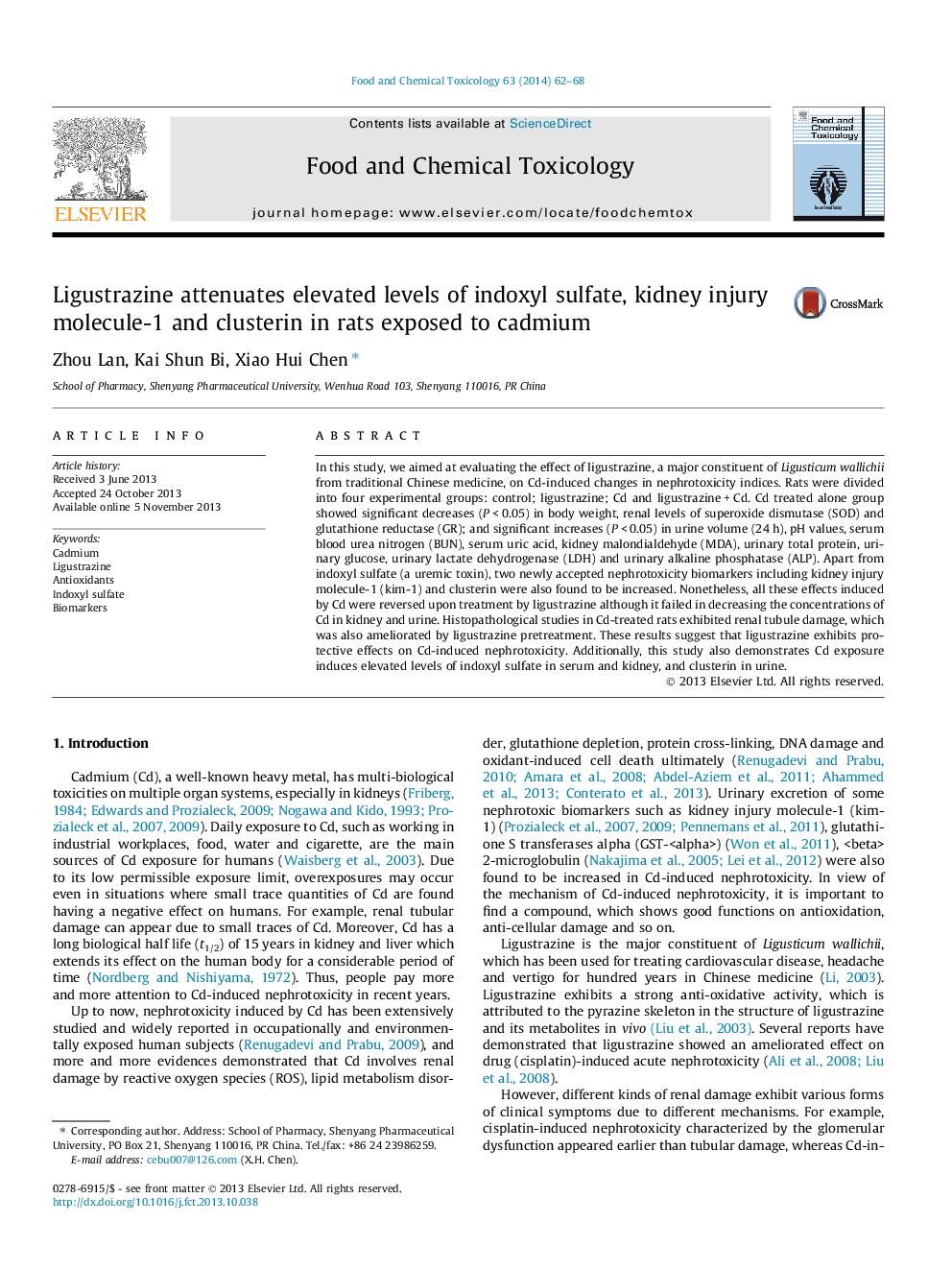| Article ID | Journal | Published Year | Pages | File Type |
|---|---|---|---|---|
| 5850820 | Food and Chemical Toxicology | 2014 | 7 Pages |
â¢Ligustrazine shows protective effects on Cd-induced nephrotoxicity.â¢Indoxyl sulfate and clusterin are involved in Cd-induced nephrotoxicity, and they might be good markers for detecting that.â¢Renal accumulation of cadmium is irrelevant to ligustrazine administration.
In this study, we aimed at evaluating the effect of ligustrazine, a major constituent of Ligusticum wallichii from traditional Chinese medicine, on Cd-induced changes in nephrotoxicity indices. Rats were divided into four experimental groups: control; ligustrazine; Cd and ligustrazine + Cd. Cd treated alone group showed significant decreases (P < 0.05) in body weight, renal levels of superoxide dismutase (SOD) and glutathione reductase (GR); and significant increases (P < 0.05) in urine volume (24 h), pH values, serum blood urea nitrogen (BUN), serum uric acid, kidney malondialdehyde (MDA), urinary total protein, urinary glucose, urinary lactate dehydrogenase (LDH) and urinary alkaline phosphatase (ALP). Apart from indoxyl sulfate (a uremic toxin), two newly accepted nephrotoxicity biomarkers including kidney injury molecule-1 (kim-1) and clusterin were also found to be increased. Nonetheless, all these effects induced by Cd were reversed upon treatment by ligustrazine although it failed in decreasing the concentrations of Cd in kidney and urine. Histopathological studies in Cd-treated rats exhibited renal tubule damage, which was also ameliorated by ligustrazine pretreatment. These results suggest that ligustrazine exhibits protective effects on Cd-induced nephrotoxicity. Additionally, this study also demonstrates Cd exposure induces elevated levels of indoxyl sulfate in serum and kidney, and clusterin in urine.
